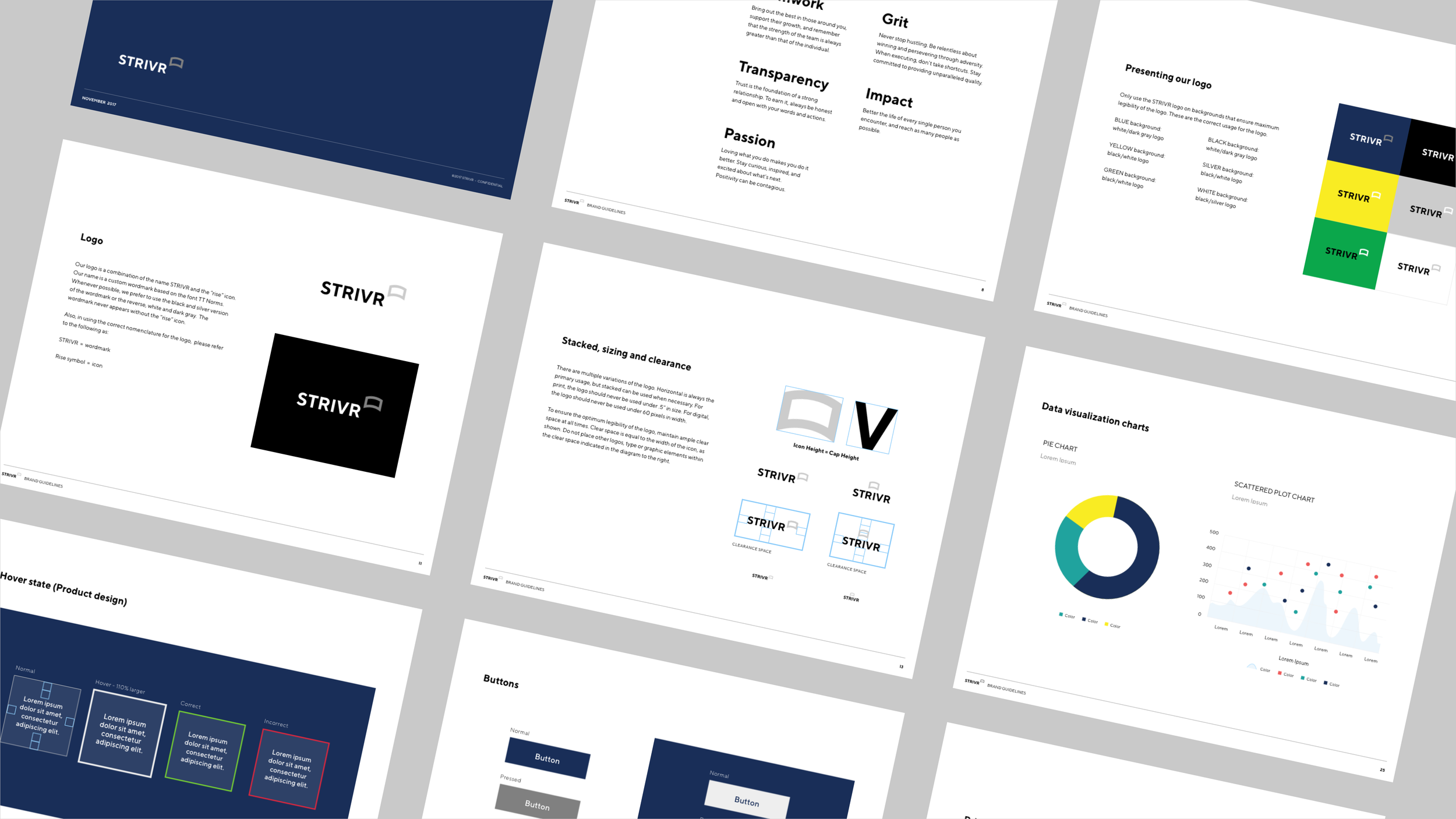
Strivr

STRIVR
USING IMMERSIVE VR TRAINING TO IMPROVE SKILLS FOR PEOPLE TO BE MORE EFFECTIVE AND EMPOWERED
www.strivr.com
ABOUT
STRIVR is an end-to-end immersive learning platform that revolutionizes the way people train, learn, and perform. Through the use of VR, new skills are learned faster, retention, and engagement are increased and learners who take part get on-demand access to real-world scenarios in a safe environment.
CASE STUDY
To create a product that works both in the 2D and 3D world and utilizes a headset for learners and participants to perform activities and receive feedback about their performance in real-time while applying similar sets of UX and UI functionalities that people are familiar with. VR was used to identify hidden and gender biases in the workplace through an interview simulator experience.
CHALLENGES
What are the differences in designing in a 3D environment vs 2D environment and assumptions that people had around VR?
What are the benefits of immersive training?
What are the assumptions we have regarding overall knowledge of VR?
What are the health risks using a headset?
Can standard 2D design applications work in 3D/VR?

USER FLOW
Utilize Player as a VR pilot aimed at providing companies with a new and innovative solution to identify and address hidden racial and gender biases within the organization and workplace. The experience was framed with a simulated interview whereby participants were tasked with interviewing individuals for a highly sought after Rotational Management position. The group of candidates were comprised of different ethnicities and genders. As part of the simulation, the interviewer was presented with 24 interview questions that were directed to the interviewee.

WIREFRAMES
The initial wireframes were done to sketch out the progress of the interview session based on the script that was written out for the format. These were discussed with the team and adjustments were made to reduce the scope. The main interface designs needed to be simplistic and clear in a 3D platform as the interviewer put the VR headset on while going through the session.

UI DESIGN
After the initial wireframes were conducted and discussions were created with the 3D modeling team to make sure the flow of the interview process worked, the UI designs were then put together. There were a lot of discussions back and forth regarding interaction designs in this medium where typography, color, content were all taken into consideration.

Video password: interview

LEARNINGS
VR Design is not the same as designing in 2D, applying traditional designs to it does not always work. Think beyond the rectangle!
There’s a lot more consideration and limitations when designing in this space such as sound, touch, depth, and emotion that are very integral in a VR experience.
Don’t reinvent the UI patterns. Size, contrast, and colors still work, but distance is crucial between the user and the content.
